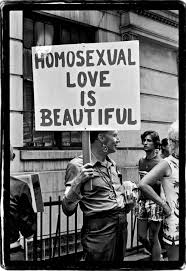The Power of Community: Building Connections and Fostering Belonging
In a world that often feels disconnected and isolating, the importance of community cannot be overstated. Whether it’s a small neighborhood, a religious congregation, or an online group, communities play a vital role in our lives. They provide support, foster belonging, and create spaces for growth and collaboration.
At its core, community is about connection. It brings people together who share common interests, values, or goals. It’s a place where individuals can find support during challenging times and celebrate together during moments of joy. In a community, we find understanding and acceptance from others who have walked similar paths.
One of the most significant benefits of being part of a community is the sense of belonging it provides. Humans are social creatures by nature, longing for connection and a place to call home. Communities offer that sense of belonging by creating spaces where individuals can be their authentic selves without fear of judgment or rejection.
Belonging to a community also brings about numerous opportunities for personal growth. Within these groups, we can learn from others’ experiences, gain new perspectives, and acquire valuable skills. Communities often provide platforms for learning through workshops, seminars, or mentorship programs. By participating actively in these opportunities, we can expand our knowledge base and develop as individuals.
Moreover, communities have the power to effect positive change on both individual lives and society as a whole. When people come together with shared goals or causes they believe in passionately, they can create real impact. Through collective action and advocacy efforts within communities, important issues can be addressed effectively.
Communities also serve as safety nets during times of crisis or adversity. They provide emotional support and practical assistance when needed most. Whether it’s helping neighbors recover from natural disasters or offering comfort to those facing personal challenges like illness or loss, communities rally around their members in times of need.
In today’s digital age, the concept of community has expanded beyond physical boundaries. Online communities have emerged, connecting individuals from different parts of the world who share common interests or identities. These virtual spaces offer opportunities for connection and support, allowing people to find a sense of belonging even when physical proximity is not possible.
Building and nurturing a community requires effort and active participation from its members. It involves fostering inclusivity, empathy, and respect for diversity. Communities thrive when individuals come together with open minds and hearts, embracing the richness that different perspectives bring.
In conclusion, community is a powerful force that shapes our lives in profound ways. It provides a sense of belonging, fosters personal growth, and empowers us to make positive changes in our lives and society. Whether it’s through physical neighborhoods or virtual spaces, being part of a community offers support, connection, and a place where we can truly belong. So let us cherish our communities and actively contribute to their growth and well-being.
Unraveling the Sudden End of a Community: Exploring the Reasons
Defining Community: Unveiling its True Essence
4. Decoding the
- What is being a community?
- Why did community end so abruptly?
- What is the definition of a community?
- How did you define community?
What is being a community?
Being a community means belonging to a group of individuals who come together based on shared values, interests, or goals. It involves actively participating and contributing to the well-being of the collective. Communities can be formed in various settings, such as neighborhoods, schools, workplaces, religious organizations, or online platforms.
At its core, being a community involves:
- Connection: Being part of a community means establishing connections and building relationships with others who share commonalities. It’s about creating bonds and fostering a sense of belonging.
- Support: Communities provide support systems where individuals can rely on one another during times of need. Whether it’s emotional support, practical assistance, or guidance, communities offer a safety net for their members.
- Collaboration: Communities thrive when individuals work together towards shared goals or causes. Collaboration allows for the pooling of resources, knowledge, and skills to achieve collective objectives.
- Diversity and Inclusion: A vibrant community embraces diversity and respects the unique perspectives and identities of its members. Inclusivity ensures that everyone feels valued and included regardless of their background or differences.
- Shared experiences: Communities often form around shared experiences or challenges that bring people together. These commonalities create opportunities for empathy, understanding, and mutual growth.
- Identity and Culture: Being part of a community contributes to an individual’s sense of identity and culture. Shared traditions, customs, language, or values shape the collective identity within the community.
- Active participation: Being an active member means actively engaging with the community through participation in events, initiatives, discussions, or decision-making processes. It involves contributing time, energy, skills, or resources for the betterment of the collective.
Being a community member is not just about receiving benefits but also about giving back and contributing to the greater good. It requires active involvement in nurturing relationships within the group while promoting inclusivity and supporting fellow members.
Ultimately, being part of a community provides a sense of connection, belonging, and purpose. It offers opportunities for personal growth, support during challenging times, and the ability to collectively make a positive impact on both individual lives and society as a whole.
Why did community end so abruptly?
The end of a community can occur for various reasons, and it is often a complex and multifaceted process. While every situation is unique, here are some common factors that can contribute to the abrupt ending of a community:
- Lack of Engagement: If community members become disengaged or lose interest in participating, the community may struggle to sustain itself. Without active involvement and contributions from its members, a community can lose its sense of purpose and cohesion.
- Conflict and Discord: Internal conflicts within a community can lead to divisions and fractures that are difficult to overcome. If disagreements escalate or trust is eroded, it can create an unhealthy environment that drives people away.
- Changes in Leadership: Strong leadership is crucial for the success of any community. If there is a sudden departure or ineffective leadership transition, it can disrupt the community’s operations and leave members feeling uncertain about its future.
- External Factors: Sometimes, external circumstances beyond the control of the community can impact its viability. Economic downturns, natural disasters, or changes in societal dynamics may affect the resources or support available to sustain the community.
- Evolving Needs and Interests: Communities need to adapt and evolve over time to remain relevant and meet the changing needs of their members. If a community fails to recognize or respond to these shifts, it may lose relevance and struggle to retain its membership base.
- Lack of Resources: Insufficient financial resources, infrastructure, or support can hinder a community’s ability to function effectively. Without adequate resources, it becomes challenging to organize events, maintain communication channels, or provide necessary services.
- Technological Advancements: The rapid advancement of technology has transformed how communities form and interact with one another. Traditional communities may struggle to adapt to new digital platforms or face competition from online alternatives.
It’s important to note that not all communities end abruptly; many continue evolving or transform into different forms as circumstances change. Additionally, communities can also experience periods of decline and resurgence, depending on various factors and the efforts of its members to revitalize it.
Understanding the reasons behind the abrupt end of a community can help us learn valuable lessons for future community-building endeavors. It highlights the importance of fostering engagement, addressing conflicts, adapting to changing needs, and ensuring effective leadership and resource management.
What is the definition of a community?
A community can be defined as a group of individuals who share common characteristics, interests, or goals and are connected through social interactions. It is a collective entity that exists to provide support, belonging, and a sense of identity to its members. Communities can be formed based on geographic location, shared cultural or ethnic backgrounds, shared hobbies or interests, or even virtual connections through online platforms. They serve as spaces where individuals come together to build relationships, collaborate, and support one another in various aspects of life.
How did you define community?
Community is defined as a group of individuals who come together based on shared interests, values, or goals. It is a social unit where people connect with one another, forming relationships and creating a sense of belonging. Communities can be geographically based, such as neighborhoods or towns, or they can exist in virtual spaces like online groups or forums. The essence of community lies in the connections and interactions between its members, who provide support, understanding, and collaboration to one another.





Leave a Reply